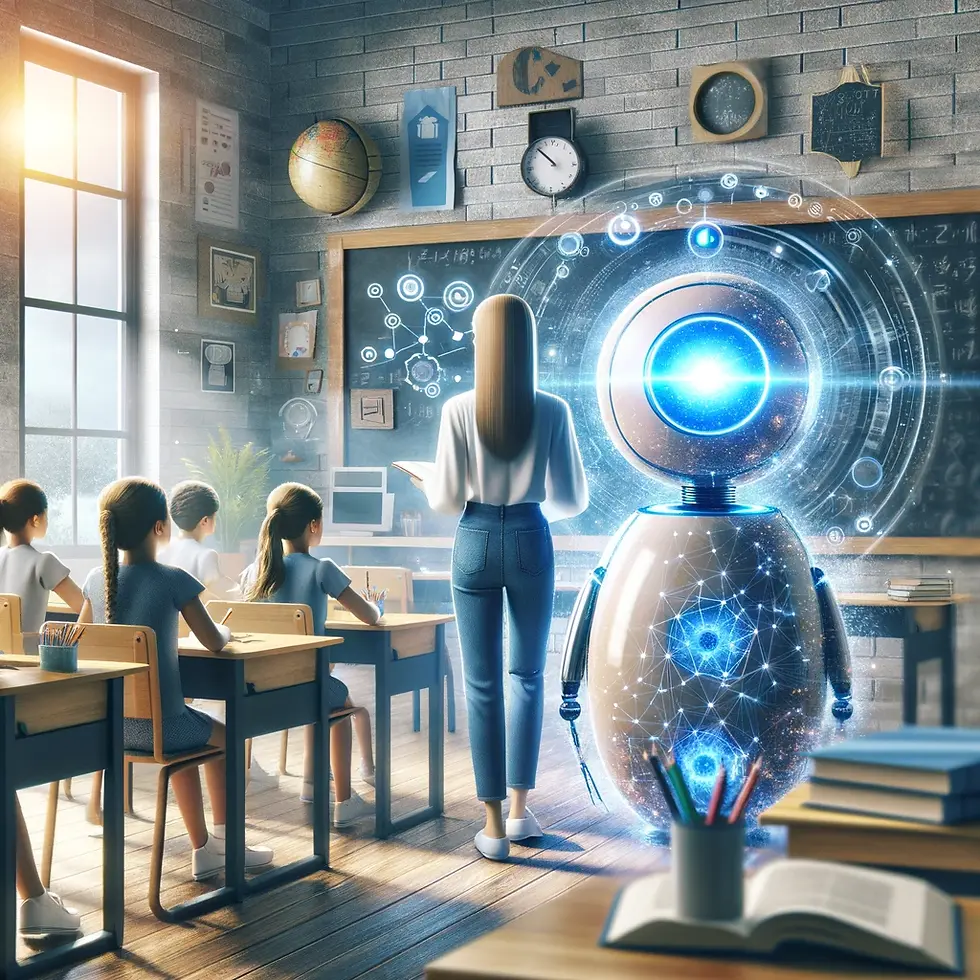ChatGPT: Can It Transform Good Teachers into Great Ones?
- Adelaide Jones

- Mar 30, 2024
- 2 min read

Teaching has always been a marathon, not a sprint. Between grading essays, lesson planning, and the thousand other tasks that fill a teacher's day, finding a moment to breathe can feel like a luxury. Alexander Slagg, in his eye-opening article "AI for Teachers: Defeating Burnout and Boosting Productivity," sheds light on a game-changer for educators: ChatGPT and the power of artificial intelligence.
The Big Misunderstanding
Some worry that bringing AI into classrooms means teachers are looking for an easy way out. That's far from the truth. Using ChatGPT doesn't cut corners—it sharpens them. It's about making the teaching process more efficient, so there's more energy for what matters most.
ChatGPT to the Rescue?
With teacher shortages and calls for a more balanced workload louder than ever, ChatGPT steps in as the much-needed support. Referencing the HMH’s 9th Annual Educator Confidence Report, Slagg highlights a stark reality: 82% of educators are desperate for a lighter load. ChatGPT offers just that, tackling up to 40% of tasks that usually eat into a teacher's time.
Focusing on What Counts
Imagine having a few extra hours each week. With ChatGPT taking care of grading and planning, teachers can get back to the heart of their work: connecting with students, sparking curiosity, and tailoring lessons to fit every learner.
Strengthening Classroom Connections
By handling the behind-the-scenes work, ChatGPT lets teachers spend more time on human interactions. It’s not about removing the personal touch from teaching; it’s about giving teachers the space to expand it.
Making Learning Personal
AI isn't just doing the busywork. Tools like Microsoft 365 and Google Workspace for Education, as Slagg points out, offer features that support individualized learning. Whether it’s Reading Coach in Microsoft 365 helping students improve their skills, or Google Workspace making lesson content interactive, AI is making personalized education more achievable.
Embracing AI
Yes, introducing AI into the classroom comes with its set of challenges, such as data privacy concerns. But the benefits, including reduced teacher burnout and better learning outcomes, are too significant to ignore. As educators, it’s about choosing to use every tool at our disposal to support our work and our students.
To sum up, using ChatGPT doesn’t make teaching impersonal; it makes personal attention more feasible. It's a way to be there for every student, every day, without wearing yourself thin. Let’s move into the future of education with tools that let us teach with passion and live with balance.
Reference: Slagg, Alexander. "AI for Teachers: Defeating Burnout and Boosting Productivity." Read the full article here.




Comments